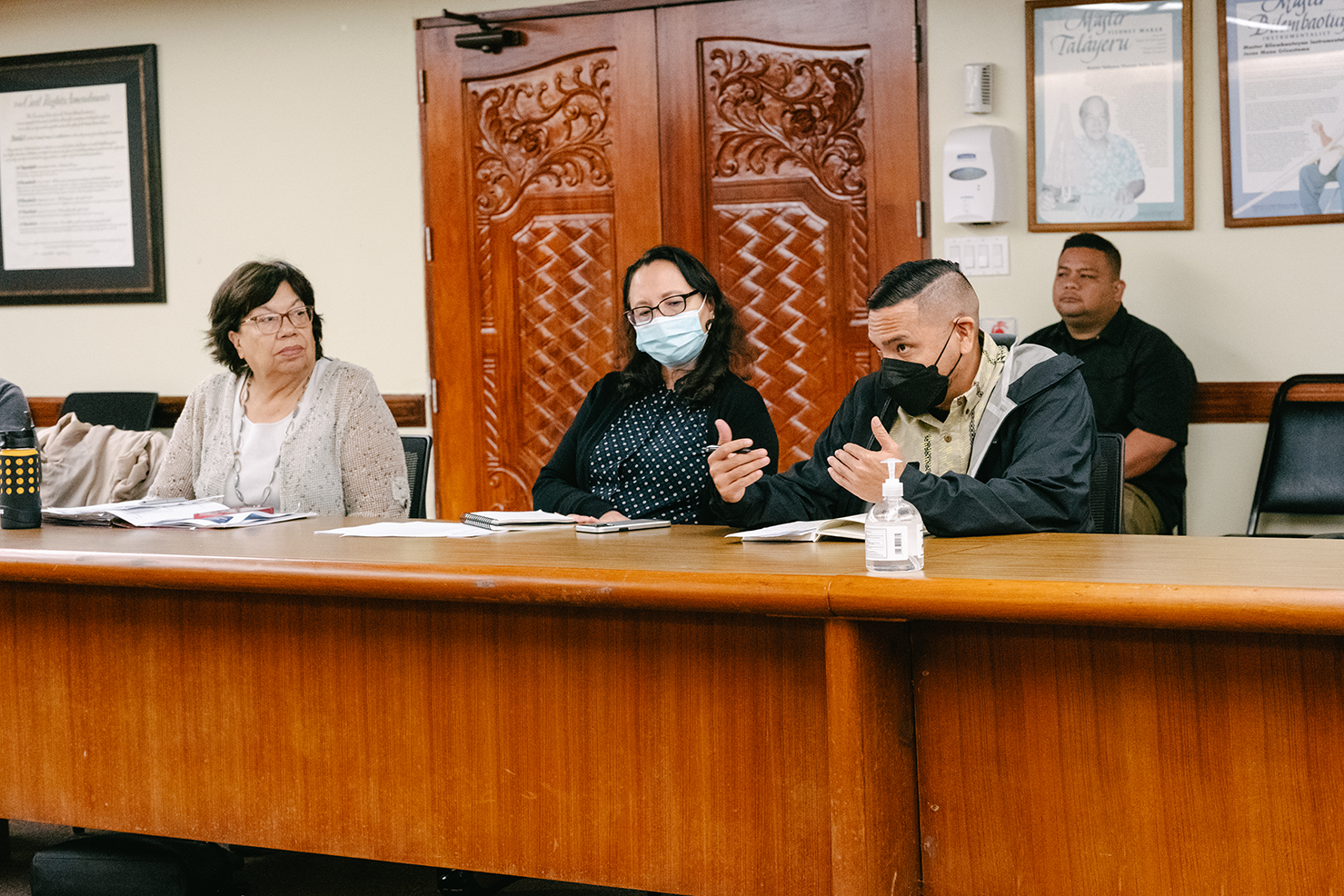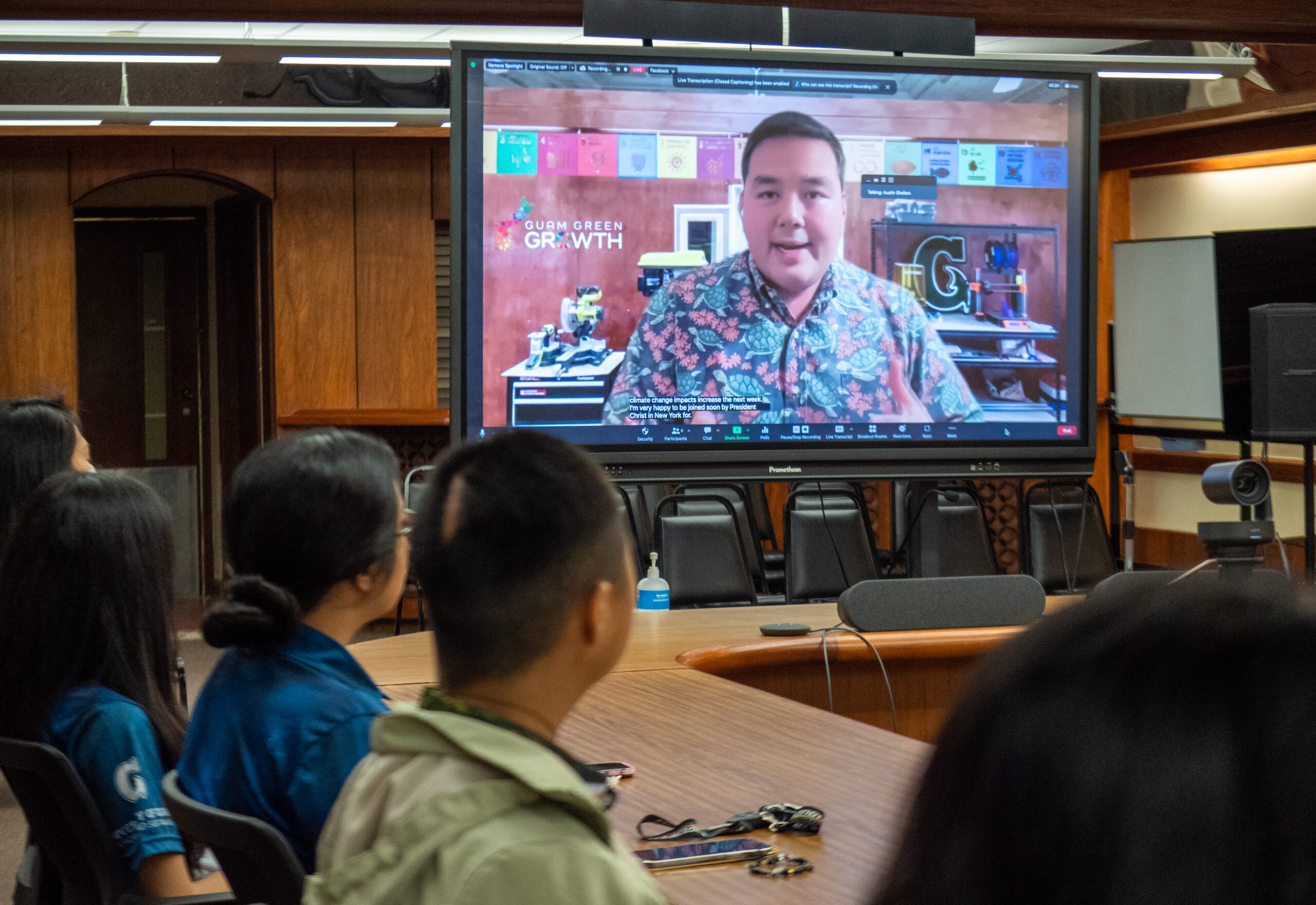Update

A house that sits atop an elevated land in Talo’fo’fo’ attracts passers-by with its unique glass exterior. But beyond its curb appeal, the home has more to offer — it is also a model of sustainable design and function, according to its homeowners, social work professors Gerhard Schwab and Vivian Dames.
Dames said, “People sometimes refer to the house as ‘the boat house or the chapel or the church.’ It has been called many different things because of its modern design.”
Over the years, the house has been retrofitted with energy-efficient features that optimize the use of available resources in the environment. For instance, the house design uses passive ventilation to naturally cool living and workspaces.
“We have ceiling fans in every room. When we built this extension, we designed it so that in the hot afternoon sun, it doesn’t come in in any windows. So, it keeps that side of the house very cool,” Dames said.
Dames and Schwab also invested in a solar energy system that produces enough power for the home and an electric car.
“We have 40 panels out there and that is just enough to cover the household, the fridge, washer and the air conditioner plus our electric car. We have our solar panels covering our entire energy needs,” Schwab said.
The house also has a rainwater catchment system to support the non-potable requirements of the household. According to Dames, the system was designed into the house. In fact, the house has a pitched roof that catches and filters rainwater which feeds into a 2000-gallon fiberglass tank.
“We collect rainwater, and we have two tanks at the back. So, we collect the rainwater and then we pump it back in the house. When we take a shower and wash the dishes, it is all rainwater,” Schwab said.
According to Dames, building a fully sustainable home on island takes a while. “It is important to emphasize that it is difficult on Guam to establish a fully sustainable home environment quickly because it takes time and it takes resources and very importantly, you have to have the external support of people who are experts in the field and the infrastructure. to support sustainable living.” Dames added, “What we have today is something that is the result of years of envisioning and trying things and experimenting.”
Apart from having an energy efficient home, Dames and Schwab also practice sustainable living.
Schwab said, “Guam is very difficult in terms of removing or reducing our ecological footprint. One of my goals is to work on eating more locally produced food and cutting down airline traffic and not flying as much anymore.”
He added, “For us, although the economic savings is nice, trying to live an environmentally conscious life comes out of our fundamental beliefs in a social ecology. It is a framework that comes out of our being social workers and also our faith, our Catholic social teaching about the importance of stewardship. And our responsibility to be good stewards of the gifts of creation.”




















